Influence of a Thermo-Mechanical Treatment on the Fatigue Lifetime and Crack Initiation Behavior of a Quenched and Tempered Steel
Abstract
1. Introduction
2. Materials and Experimental Procedure
2.1. Material and Specimens
2.2. Testing Setups
2.3. Thermo-Mechanical Treatment
2.4. Fracture Surface Analysis
3. Results and Discussion
3.1. Thermo-Mechanical Treatment
3.2. Lifetime Behavior
3.3. Fractography and Damage Analysis
4. Conclusions
- A suitable TMT, with the optimum temperature of 265 °C and a gradually increasing stress amplitude of 600–1600 MPa, was found and applied.
- The applied TMT increases both the fatigue lifetime and the fatigue strength in the HCF and VHCF regimes, while in the LCF regime, it leads to a reduced lifetime. The lower lifetime in the LCF regime may be attributed to the lower hardness due to the TMT, which acts like a short-term-tempering. Consequently, in the HCF and VHCF regimes, the TMT overcompensates the negative effect of the lower hardness.
- The critical inclusion sizes, leading to the crack initiation in both the TMT and HT specimens, have been measured, and it has been found that the maximum stress intensity factors of inclusions for the TMT specimens are higher than those for the reference specimens in the case of failure in the HCF and VHCF regimes. The positive effect of the applied TMT, resulting in the observed increased fatigue strength and fatigue lifetime, can be, thus, attributed to a stabilization of the microstructure around the critical inclusions due to cyclic plastic deformation at the temperature of maximum dynamic strain aging during the TMT.
- While the TMT was able to increase the fatigue strength in the HCF as well as in the VHCF regime, it was unable to prevent the characteristic FGA formation, resulting in a failure in the VHCF regime, and it does not modify the transition from FGA formation to long crack growth at the border of the FGA.
Author Contributions
Funding
Data Availability Statement
Conflicts of Interest
References
- Murakami, Y.; Kodama, S.; Konuma, S. Quantitative evaluation of effects of non-metallic inclusions on fatigue strength of high strength steels. I: Basic fatigue mechanism and evaluation of correlation between the fatigue fracture stress and the size and location of non-metallic inclusions. Int. J. Fatigue 1989, 11, 291–298. [Google Scholar] [CrossRef]
- Mughrabi, H. On ‘multi-stage’ fatigue life diagrams and the relevant life-controlling mechanisms in ultrahigh-cycle fatigue. Fatigue Fract. Eng. Mater. Struct. 2002, 25, 755–764. [Google Scholar] [CrossRef]
- Mughrabi, H. Specific features and mechanisms of fatigue in the ultrahigh-cycle regime. Int. J. Fatigue 2006, 28, 1501–1508. [Google Scholar] [CrossRef]
- Lipiński, T.; Wach, A.; Detyna, E. Influence Of Large Non-Metallic Inclusions On Bending Fatigue Strength Hardened And Tempered Steels. Adv. Mater. Sci. 2015, 15, 33–40. [Google Scholar] [CrossRef][Green Version]
- Li, W.; Deng, H.; Liu, P. Interior Fracture Mechanism Analysis and Fatigue Life Prediction of Surface-Hardened Gear Steel under Axial Loading. Materials 2016, 9, 843. [Google Scholar] [CrossRef] [PubMed]
- Sakai, T.; Sato, Y.; Oguma, N. Characteristic S-N properties of high-carbon-chromium-bearing steel under axial loading in long-life fatigue. Fatigue Fract. Eng. Mater. Struct. 2002, 25, 765–773. [Google Scholar] [CrossRef]
- Murakami, Y.; Nomoto, T.; Ueda, T. Factors influencing the mechanism of superlong fatigue failure in steels. Fatigue Fract. Eng. Mater. Struct. 1999, 22, 581–590. [Google Scholar] [CrossRef]
- Sakai, T.; Harada, H.; Oguma, N. Crack initiation mechanism of bearing steel in very high cycle fatigue. Proc. ECF-16 CD-ROM 2006. [Google Scholar] [CrossRef]
- Spriestersbach, D.; Grad, P.; Kerscher, E. Threshold values for very high cycle fatigue failure of high-strength steels. Fatigue Fract. Engng. Mater. Struct. 2017, 40, 1708–1717. [Google Scholar] [CrossRef]
- Chai, G.; Forsman, T.; Gustavsson, F.; Wang, C. Formation of fine grained area in martensitic steel during very high cycle fatigue. Fatigue Fract. Engng. Mater. Struct. 2015, 38, 1315–1323. [Google Scholar] [CrossRef]
- Zhu, M.-L.; Jin, L.; Xuan, F.-Z. Fatigue life and mechanistic modeling of interior micro-defect induced cracking in high cycle and very high cycle regimes. Acta Mater. 2018, 157, 259–275. [Google Scholar] [CrossRef]
- Song, Q.; Sun, C. Mechanism of crack initiation and early growth of high strength steels in very high cycle fatigue regime. Mater. Sci. Eng. A 2020, 771, 138648. [Google Scholar] [CrossRef]
- Sippel, J.P.; Kerscher, E. Properties of the Fine Granular Area and Postulated Models for Its Formation during Very High Cycle Fatigue—A Review. Appl. Sci. 2020, 10, 8475. [Google Scholar] [CrossRef]
- Guo, J.; Han, S.; Chen, X.; Guo, H.; Yan, Y. Control of Non-metallic Inclusion Plasticity and Steel Cleanliness for Ultrathin 18 Pct Cr-8 Pct Ni Stainless Steel Strip. Met. Mater. Trans. B 2020, 51, 1813–1823. [Google Scholar] [CrossRef]
- Yang, Z.; Li, S.; Zhang, J.; Li, G.; Li, Z.; Hui, W.; Weng, Y. The fatigue behaviors of zero-inclusion and commercial 42CrMo steels in the super-long fatigue life regime. Acta Mater. 2004, 52, 5235–5241. [Google Scholar] [CrossRef]
- Zhang, J.; Li, S.; Yang, Z.; Li, G.; Hui, W.; Weng, Y. Influence of inclusion size on fatigue behavior of high strength steels in the gigacycle fatigue regime. Int. J. Fatigue 2007, 29, 765–771. [Google Scholar] [CrossRef]
- Yang, C.; Luan, Y.; Li, D.; Li, Y.; Tariq, N.u.H. Very high cycle fatigue behavior of bearing steel with rare earth addition. Int. J. Fatigue 2020, 131, 105263. [Google Scholar] [CrossRef]
- Kerscher, E.; Lang, K.-H.; Vöhringer, O.; Löhe, D. Increasing the fatigue limit of a bearing steel by dynamic strain ageing. Int. J. Fatigue 2008, 30, 1838–1842. [Google Scholar] [CrossRef]
- Kerscher, E.; Lang, K.-H.; Löhe, D. Increasing the fatigue limit of a high-strength bearing steel by thermomechanical treatment. Mater. Sci. Eng. A 2008, 483–484, 415–417. [Google Scholar] [CrossRef]
- Kerscher, E. Steigerung der Schwingfestigkeit von 100Cr6 Durch Thermomechanische Behandlungen; Fakultät für Maschinenbau, Universität Karlsruhe: Karlsruhe, Germany, 2004. [Google Scholar]
- Furuya, Y. Specimen size effects on gigacycle fatigue properties of high-strength steel under ultrasonic fatigue testing. Scr. Mater. 2008, 58, 1014–1017. [Google Scholar] [CrossRef]
- Furuya, Y. Size effects in gigacycle fatigue of high-strength steel under ultrasonic fatigue testing. Procedia Eng. 2010, 2, 485–490. [Google Scholar] [CrossRef]
- Tridello, A.; Paolino, D.S.; Rossetto, M. Ultrasonic VHCF Tests on Very Large Specimens with Risk-Volume Up to 5000 mm3. Appl. Sci. 2020, 10, 2210. [Google Scholar] [CrossRef]
- Heinz, S.; Balle, F.; Wagner, G.; Eifler, D. Analysis of fatigue properties and failure mechanisms of Ti6Al4V in the very high cycle fatigue regime using ultrasonic technology and 3D laser scanning vibrometry. Ultrasonics 2013, 53, 1433–1440. [Google Scholar] [CrossRef]
- Grad, P. Rissinitiierung und Rissausbreitung im VHCF-Bereich des Hochfesten Stahls 100Cr6; Fachbereich Maschinenbau und Verfahrenstechnik, Technische Universität Kaiserslautern: Kaiserslautern, Germany, 2013. [Google Scholar]
- Spriestersbach, D. VHCF-Verhalten des Hochfesten Stahls 100Cr6: Rissinitiierungsmechanismen und Schwellenwerte; Arbeitsgruppe Werkstoffprüfung, Technische Universität Kaiserslautern: Kaiserslautern, Germany, 2019. [Google Scholar]
- Zhao, A.; Xie, J.; Sun, C.; Lei, Z.; Hong, Y. Effects of strength level and loading frequency on very-high-cycle fatigue behavior for a bearing steel. Int. J. Fatigue 2012, 38, 46–56. [Google Scholar] [CrossRef]
- Li, W.; Sakai, T.; Li, Q.; Lu, L.T.; Wang, P. Effect of loading type on fatigue properties of high strength bearing steel in very high cycle regime. Mater. Sci. Eng. A 2011, 528, 5044–5052. [Google Scholar] [CrossRef]
- Kovacs, S.; Beck, T.; Singheiser, L. Influence of mean stresses on fatigue life and damage of a turbine blade steel in the VHCF-regime. Int. J. Fatigue 2013, 49, 90–99. [Google Scholar] [CrossRef]
- Lang, K.-H.; Korn, M.; Rohm, T. Very High Cycle Fatigue Resistance of the Low Alloyed Steel 42CrMo4 in Medium- and High-Strength Quenched and Tempered Condition. Procedia Struct. Integr. 2016, 2, 1133–1142. [Google Scholar] [CrossRef]
- Grad, P.; Reuscher, B.; Brodyanski, A.; Kopnarski, M.; Kerscher, E. Mechanism of fatigue crack initiation and propagation in the very high cycle fatigue regime of high-strength steels. Scr. Mater. 2012, 67, 838–841. [Google Scholar] [CrossRef]
- Abdesselam, H.; Crepin, J.; Pineau, A.; Rouffie, A.-L.; Gaborit, P.; Menut-Tournadre, L.; Morgeneyer, T. On the crystallographic, stage I-like, character of fine granular area formation in internal fish-eye fatigue cracks. Int. J. Fatigue 2018, 106, 132–142. [Google Scholar] [CrossRef]
- Sun, C.; Song, Q.; Zhou, L.; Liu, J.; Wang, Y.; Wu, X.; Wei, Y. The formation of discontinuous gradient regimes during crack initiation in high strength steels under very high cycle fatigue. Int. J. Fatigue 2019, 124, 483–492. [Google Scholar] [CrossRef]
- Shiozawa, K.; Morii, Y.; Nishino, S. Subsurface Crack Initiation and Propagation Mechanism under the Super-Long Fatigue Regime for High Speed Tool Steel (JIS SKH51) by Fracture Surface Topographic Analysis. JSME Int. J. 2006, 49, 1–10. [Google Scholar] [CrossRef][Green Version]
- Mayer, H.; Haydn, W.; Schuller, R.; Issler, S.; Bacher-Höchst, M. Very high cycle fatigue properties of bainitic high carbon–chromium steel under variable amplitude conditions. Int. J. Fatigue 2009, 31, 1300–1308. [Google Scholar] [CrossRef]
- Spriestersbach, D.; Kerscher, E. The role of local plasticity during very high cycle fatigue crack initiation in high-strength steels. Int. J. Fatigue 2018, 111, 93–100. [Google Scholar] [CrossRef]

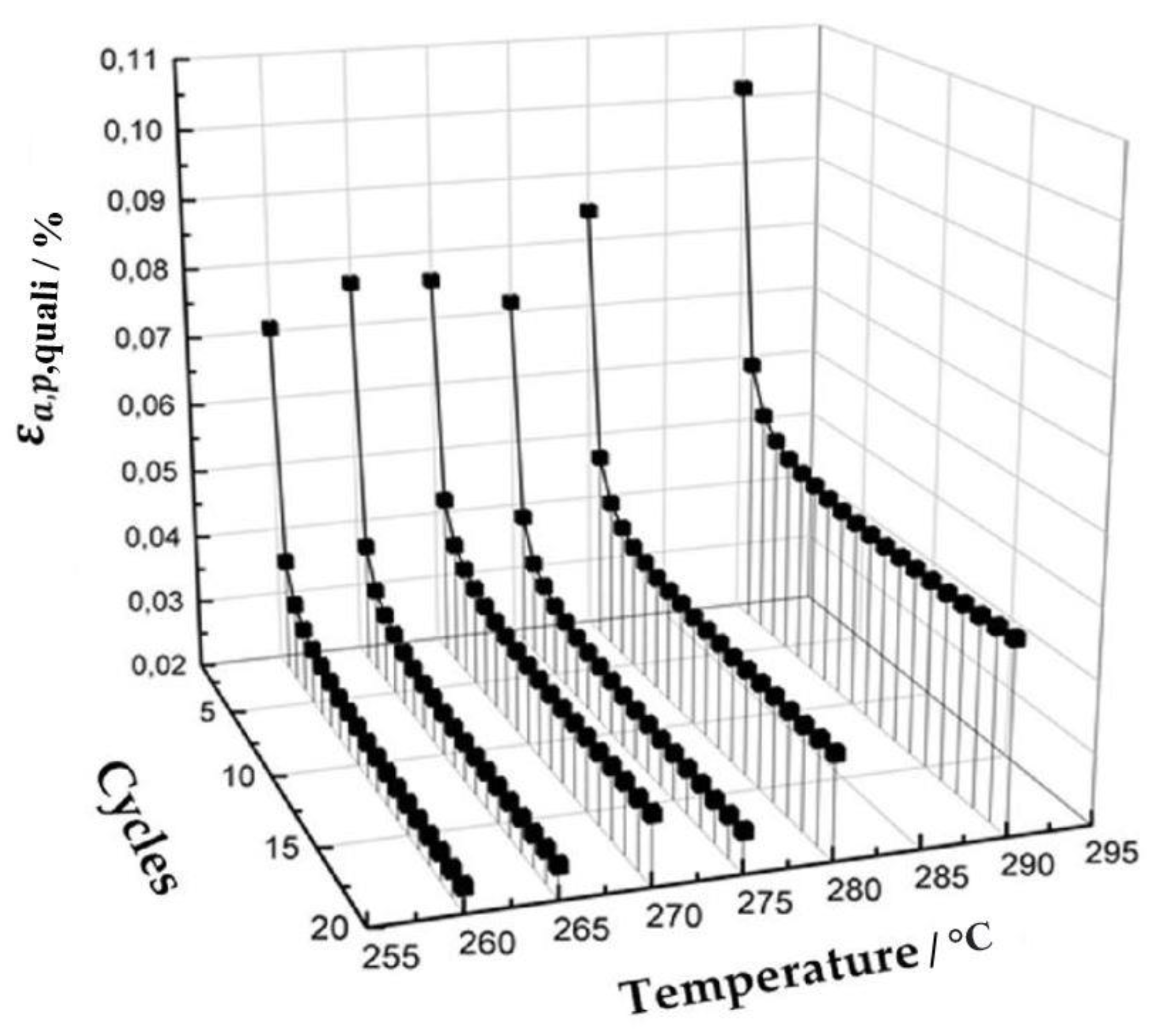
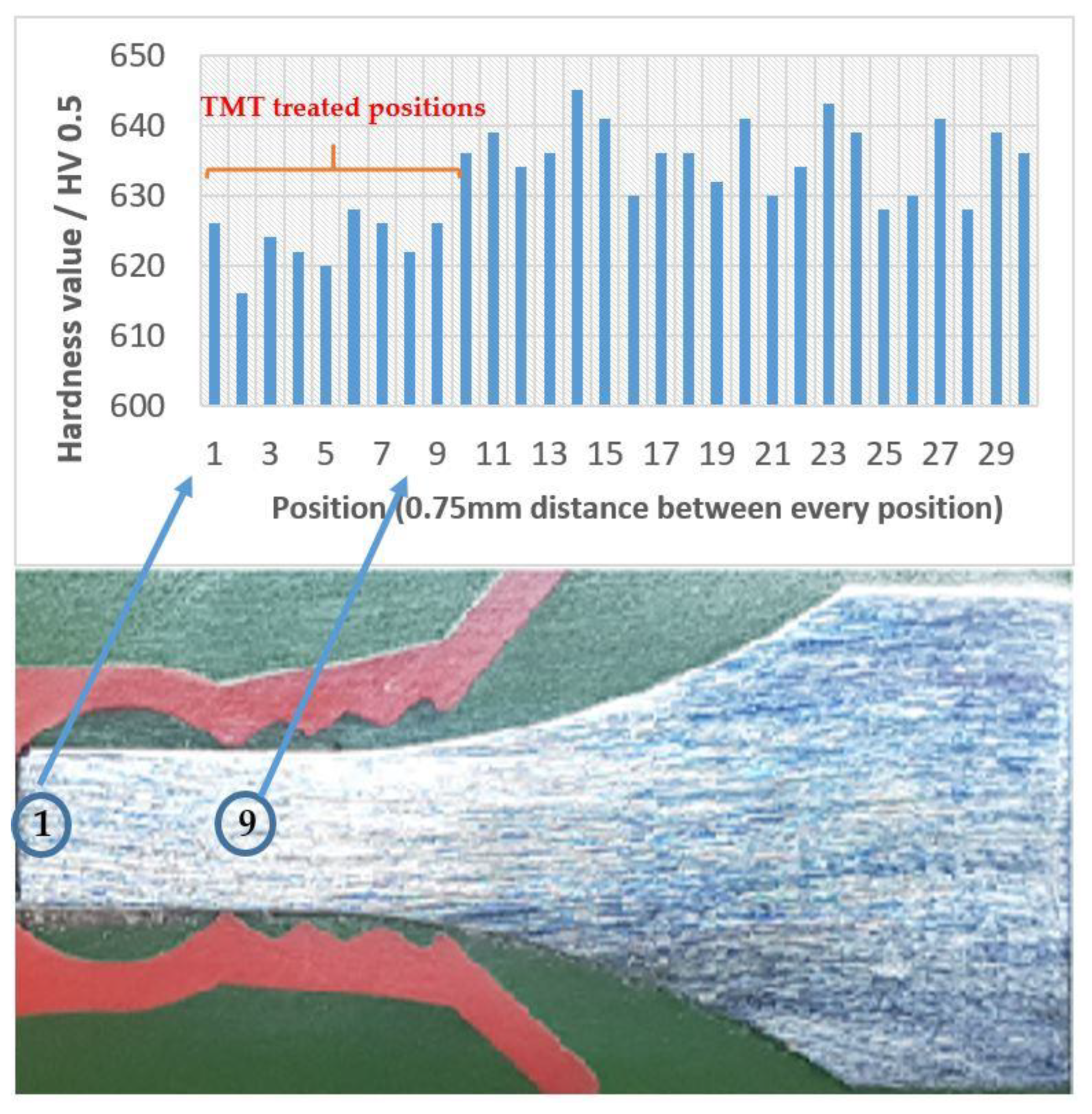
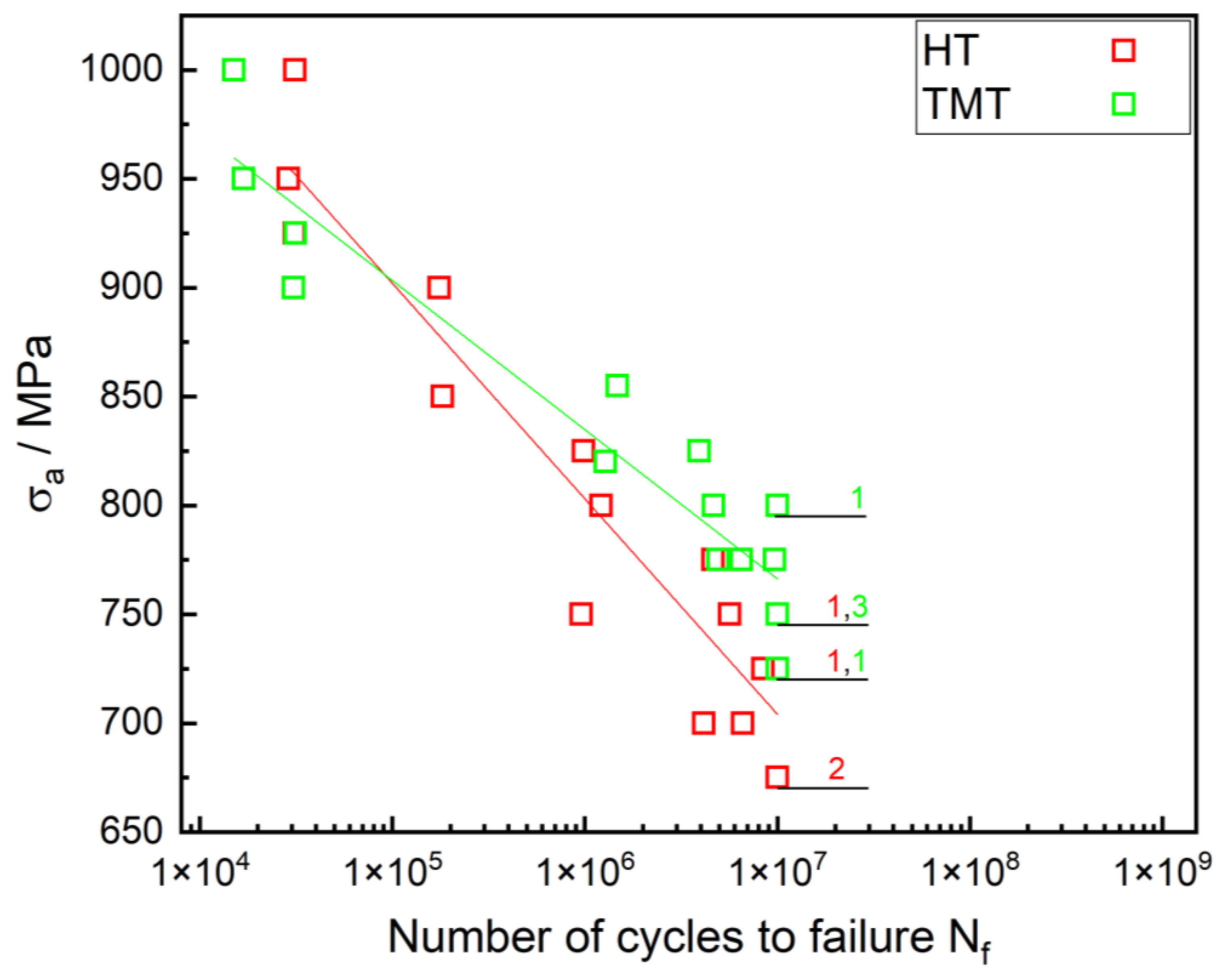

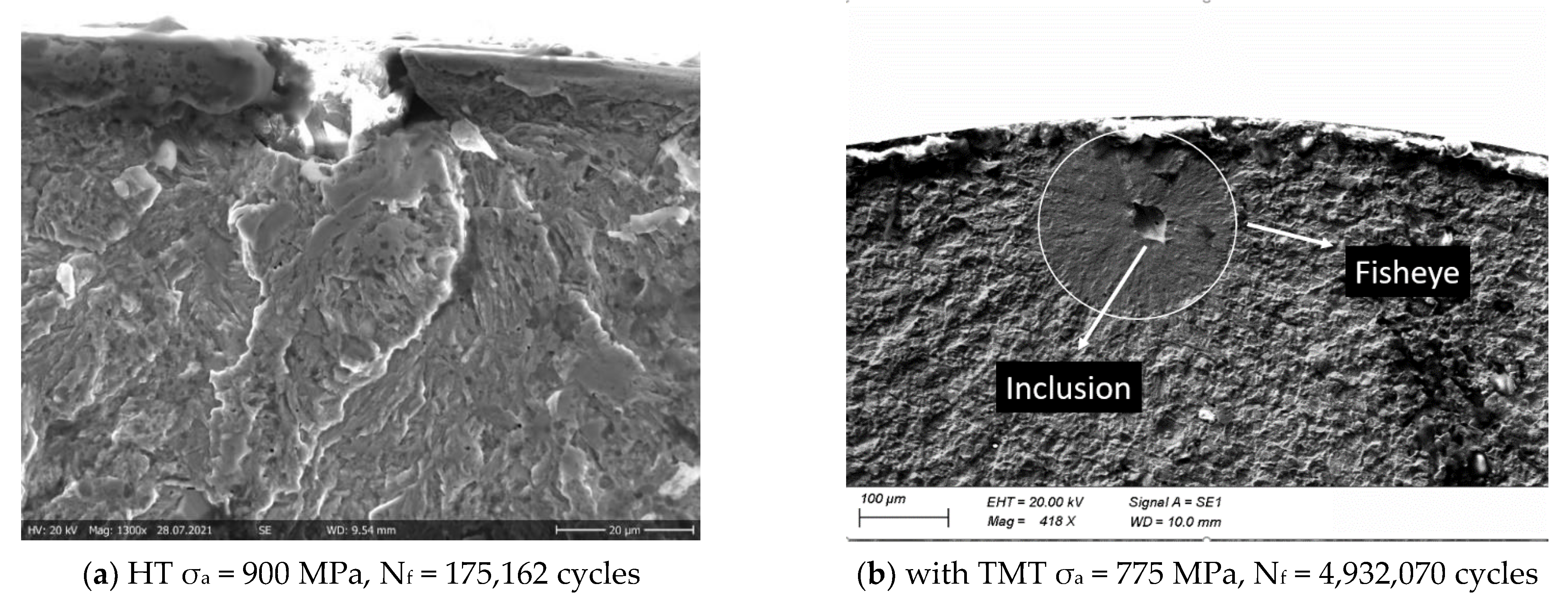

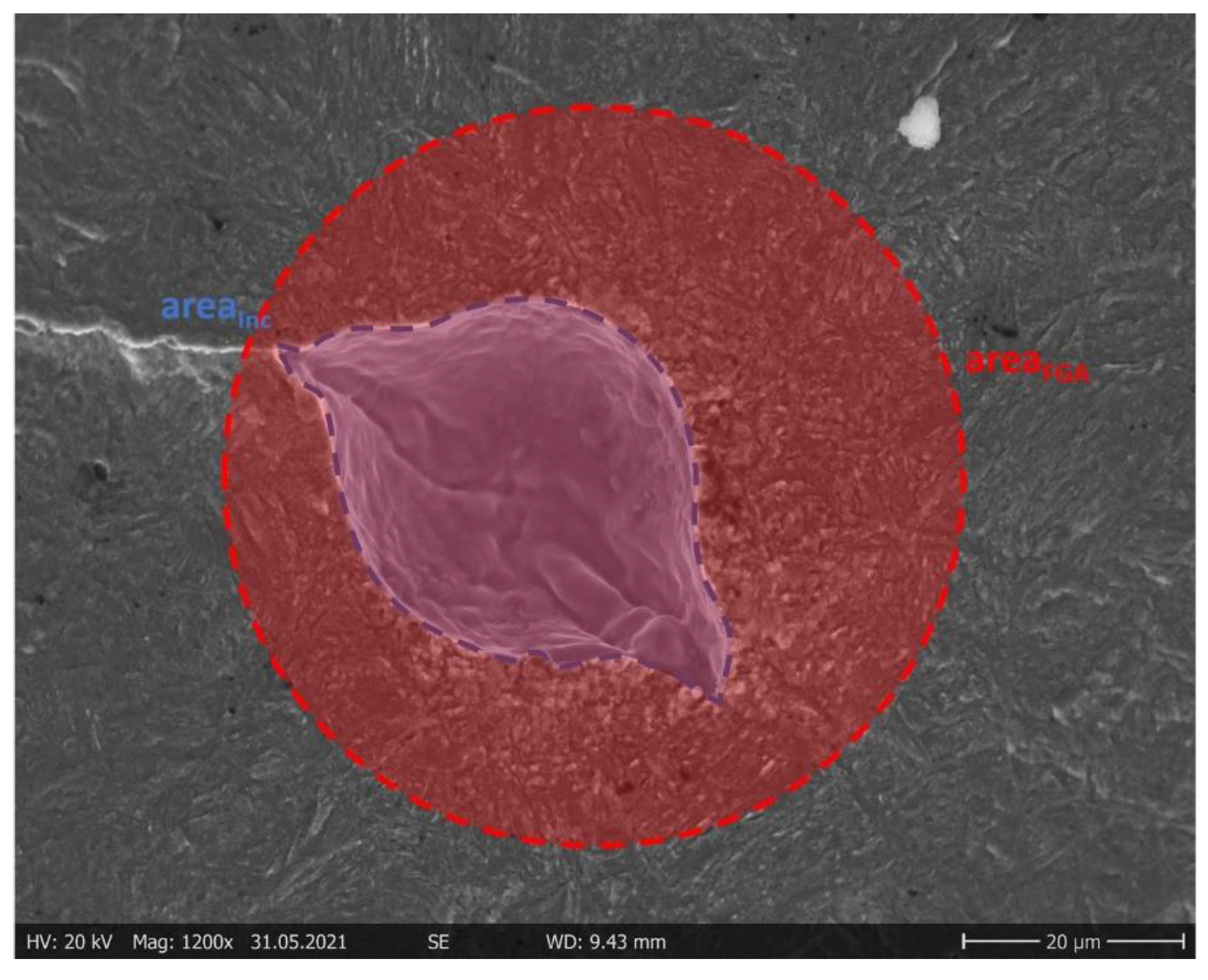
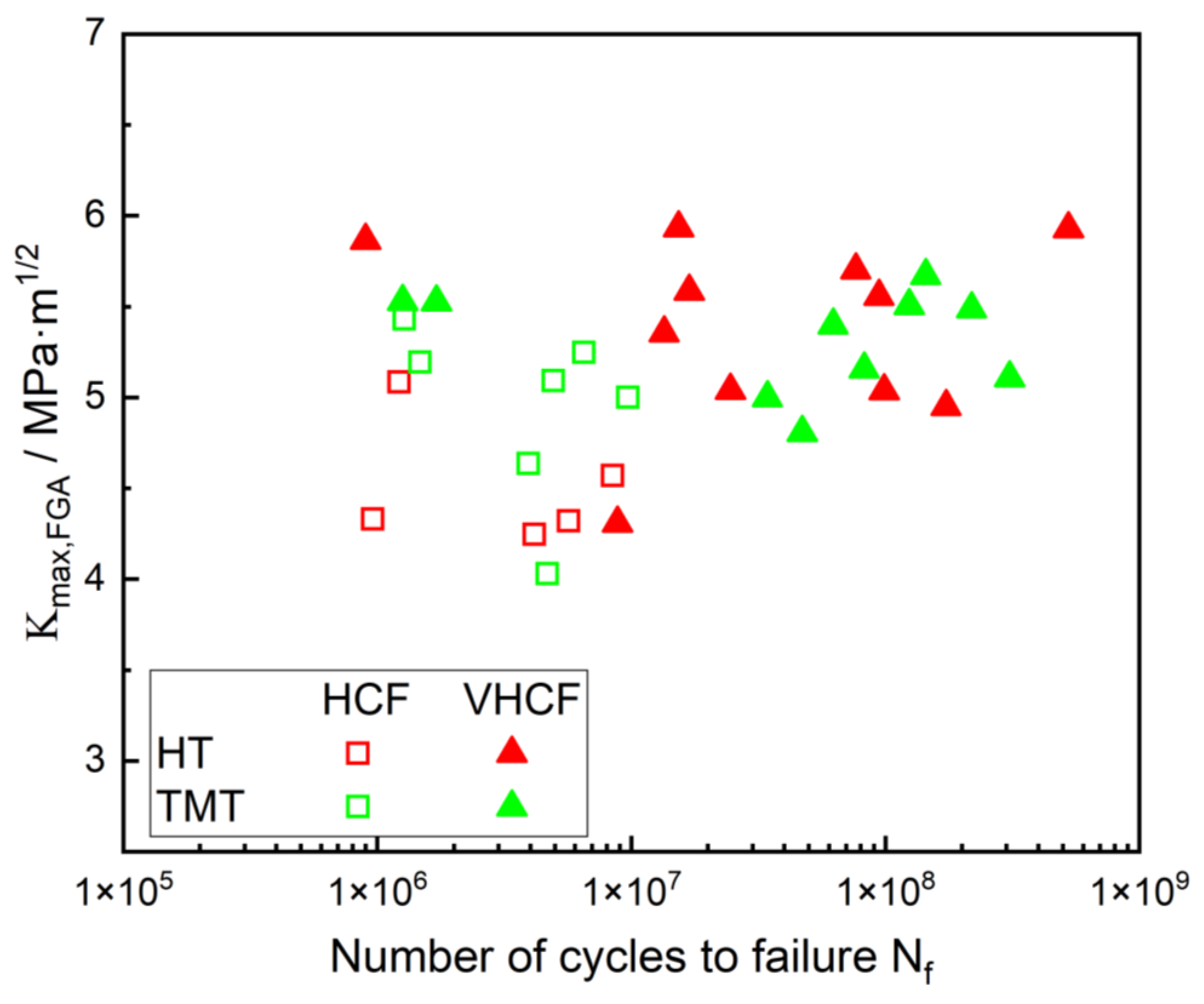
| C | Si | Mn | P | S | Cr | Mo | Fe |
|---|---|---|---|---|---|---|---|
| 0.430 | 0.259 | 0.743 | 0.012 | 0.039 | 1.060 | 0.207 | Balance |
Publisher’s Note: MDPI stays neutral with regard to jurisdictional claims in published maps and institutional affiliations. |
© 2022 by the authors. Licensee MDPI, Basel, Switzerland. This article is an open access article distributed under the terms and conditions of the Creative Commons Attribution (CC BY) license (https://creativecommons.org/licenses/by/4.0/).
Share and Cite
Khayatzadeh, A.; Sippel, J.; Guth, S.; Lang, K.-H.; Kerscher, E. Influence of a Thermo-Mechanical Treatment on the Fatigue Lifetime and Crack Initiation Behavior of a Quenched and Tempered Steel. Metals 2022, 12, 204. https://doi.org/10.3390/met12020204
Khayatzadeh A, Sippel J, Guth S, Lang K-H, Kerscher E. Influence of a Thermo-Mechanical Treatment on the Fatigue Lifetime and Crack Initiation Behavior of a Quenched and Tempered Steel. Metals. 2022; 12(2):204. https://doi.org/10.3390/met12020204
Chicago/Turabian StyleKhayatzadeh, Amin, Jan Sippel, Stefan Guth, Karl-Heinz Lang, and Eberhard Kerscher. 2022. "Influence of a Thermo-Mechanical Treatment on the Fatigue Lifetime and Crack Initiation Behavior of a Quenched and Tempered Steel" Metals 12, no. 2: 204. https://doi.org/10.3390/met12020204
APA StyleKhayatzadeh, A., Sippel, J., Guth, S., Lang, K.-H., & Kerscher, E. (2022). Influence of a Thermo-Mechanical Treatment on the Fatigue Lifetime and Crack Initiation Behavior of a Quenched and Tempered Steel. Metals, 12(2), 204. https://doi.org/10.3390/met12020204







